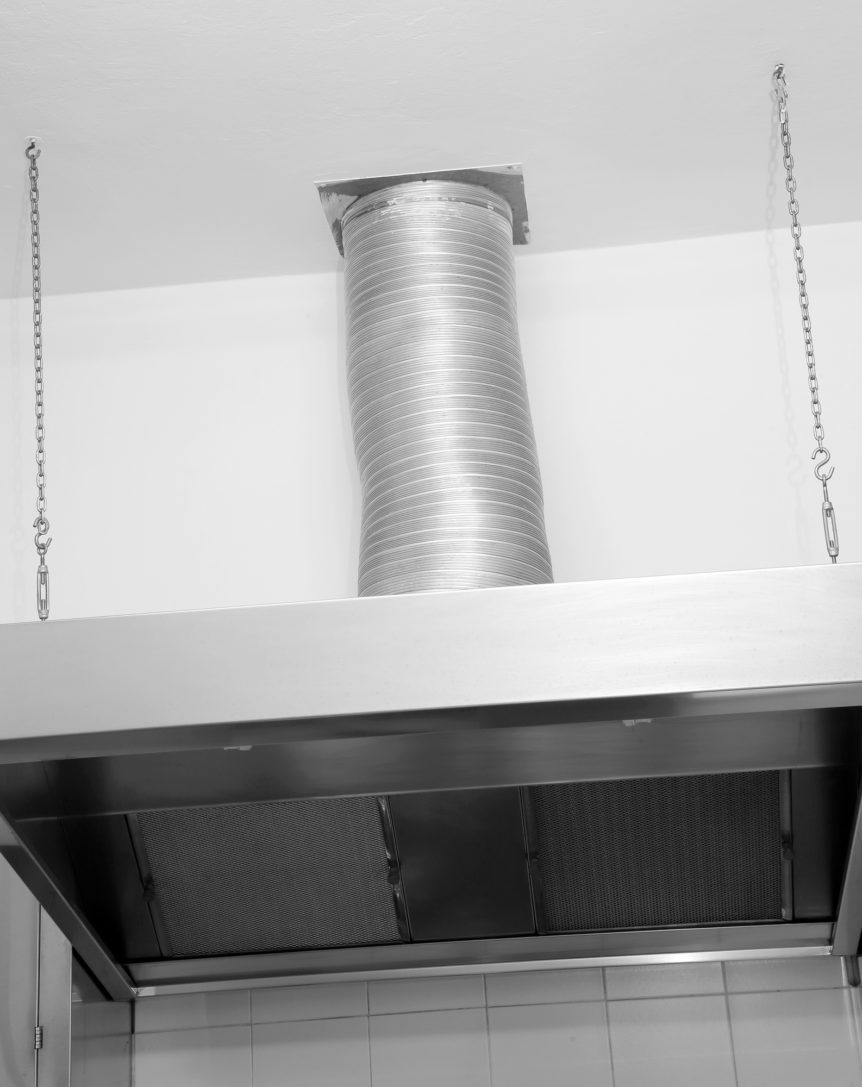One of the largest purchases that new restaurant owners are surprised by is the commercial exhaust hood, such as a Vent-a-Hood.
On average, a commercial exhaust hood may cost from $1,000 to $1,500 per linear foot. Considering that the price is high and that the average hood size is 10 feet, many new restaurant owners wrestle with whether or not they need one.
Read on to learn why you do need one and what you’re paying for.
Why You Need a Commercial Exhaust Hood
One of the biggest reasons you need a commercial exhaust hood for your restaurant is that you must comply with local fire, health, and building codes if you want to stay in business.
Secondly, a proper restaurant hood keeps your kitchen clean for your staff. Because of the amount of grease that results from commercial cooking, the air can easily become polluted and smelly. A good commercial exhaust hood allows your restaurant to remain odor-free with adequate air flow.
Most importantly, your restaurant’s hood system is your first line of defense against fire.
The National Fire Protection Association states that the majority of restaurant fires start on cooking appliances and end up in the ducts of a kitchen’s exhaust system. A properly maintained exhaust helps reduce this risk.
Parts of a Commercial Exhaust Hood System
There are 3 main parts to a restaurant exhaust hood system. They are the exhaust hood (also known as a canopy), the ductwork, and the fan system that is installed on the roof.
The canopy works to pull out heat through a baffle grease filter. The hood style will depend on the type of cooking that will take place in your establishment as well as what type of oven you have.
You will also need some kind of fire suppression system. This is typically installed under the exhaust directly over each cooking element. It’s also wise to have one of these systems on the roof at the end of the ducts.
The baffle hood filter is responsible for extracting grease from your commercial cooking surfaces. This filter helps to prevent grease fires from reaching up into the ducts over the hood. While you’re at it, learn how to test a smoke detector quickly and correctly.
A make-up air supply unit (also known as a replacement air system) pushes fresh air to replace the air that is sent out through the exhaust. That way your kitchen constantly has clean air and good airflow.
Types of Hoods Used to Ventilate Commercial Kitchens
There are 2 types of hoods that are frequently used in commercial kitchens. Sometimes, both types will be used in different areas of the same kitchen.
Hood Type 1 is a special hood that is designed to remove smoke, fumes, and grease in commercial kitchens that use oil to fry food. This type of hood is often seen over deep fryers, stoves, and grills.
Hood Type 2 is a commercial hood that removes heat and moisture from the air. For example, if your commercial kitchen will be doing a lot of boiling water for pasta and soups, you will need this type of hood.
Final Thoughts on Commercial Exhaust Hood Systems
A proper commercial exhaust hood can protect your staff and your restaurant from fires. However, you also need to have other fire prevention tools in place, such as fire extinguishers and fire sprinklers.
Thanks for reading! We hope you found this post about commercial exhaust hoods helpful. To continue reading about fire safety, check out this article about when and why you need to inspect your fire sprinklers.

